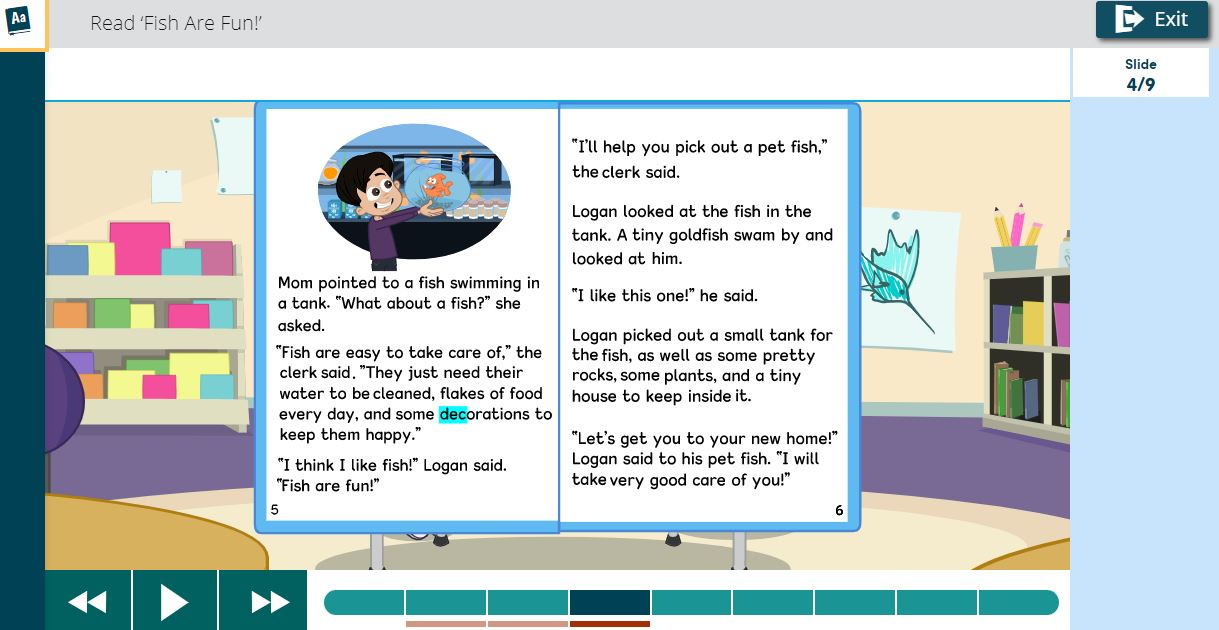The Science of Reading Explained: Fluency

In our blog and video series, The Science of Reading Explained, we’ve unpacked this important research model that backs one of the most critical elements of education—foundational literacy. This specific model has become increasingly prevalent due to pandemic disruptions affecting reading proficiency growth scores. States across the country are turning to research-backed, effective literacy practices, such as those suggested by the science of reading, to accelerate learning recovery.
If you’re looking for more information on what exactly the science of reading entails and why it’s generating buzz, take a look at the first post in this series. If you’re all caught up, let’s dive in to the next science of reading pillar—fluency.
What is fluency?
By definition, fluency is the ability to read with speed, accuracy, and proper expression. According to research, fluency is a critical part of literacy instruction, as it is the bridge between foundational skills and comprehension. While reading rate is an important factor, systemic instruction of fluency involves more than just a student’s reading rate—it also includes prosody, accuracy, and comprehension of the text.
With Exact Path, Edmentum’s K–12 diagnostic-driven, individualized learning program, fluency instruction is woven in throughout the program in a systematic, research-based way that follows the science of reading best practices.
Reading Rate
The most common and well-known side of fluency instruction involves appropriate oral reading rate. The Hasbrouck-Tindal oral reading fluency chart is a research-backed resource that breaks down reading rate targets by grade level, season, and percentile. This is especially helpful for educators to provide fluency checks for students.
Fluency checks are often used for formative assessment and progress monitoring, and usually consist of taking a running record of a student’s reading. These running records can vary from a simple measure of students’ reading rate to a detailed analysis of students’ error patterns while reading—with accuracy a vital part of any style. Measuring rate involves having a student read from a grade level text for one minute. The number of words read is counted, with errors subtracted to calculate the rate. More detailed running records note the types of errors and how students self-correct, while also including observational qualitative analysis. By using this style of formative assessment weekly or every two weeks, educators can monitor student progress over time. Try this Fluency Tracker to easily record individual student growth.
Prosody and Accuracy in Support of Comprehension
The other side of systematic fluency instruction includes prosody. Prosody is the expression and phrasing that a student uses while reading. Ideally, as students learn to read, their goal should be to accurately read as many words as possible in one minute, while also practicing appropriate expression. As students progress, they will gain automaticity, the ability to effortlessly recognize and read words, which then allows them to focus on understanding what is read.
Students can practice their fluency skills within the Exact Path program through lessons such as “Read Fish Are Fun”, shown below. Students receive instruction and modeling demonstrating how punctuation such as quotation marks, commas, question marks, and exclamation points are clues to the reader about where to add expression to their reading. This research-backed, systematic lesson supports the prosody skills within fluency that support better comprehension of text.



Why Exact Path?
Throughout exploration of each essential fluency skill, students will encounter an individualized approach to learning with engaging characters and explicit, systematic instruction. When embedded in your reading instruction, Exact Path is the perfect complement to your daily routine, primed to help you support academic recovery and develop lifelong readers. Learn more about fluency, and see our Exact Path program come to life in this accompanying video.
Ready to learn more about the Science of Reading? Check out the rest of the series, The Science of Reading Explained, Phonics, Phonological Awareness, Vocabulary, and Comprehension.
Explore Edmentum's ongoing commitment to the Science of Reading in our white paper, Exact Path: Designed with the Science of Reading.